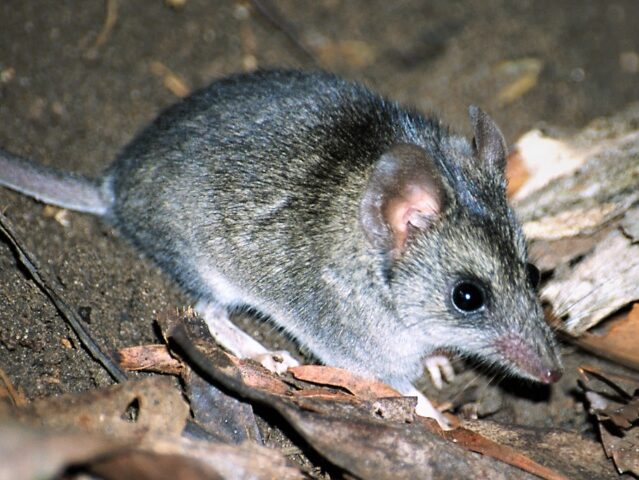Lifeline for Kangaroo Island’s dunnarts

The Black Summer bushfires were devastating for Australia’s flora and fauna, no more evident than on Kangaroo Island. Known for its coastline, mountains, bushland and its variety of wildlife, the bushfires destroyed two thirds of the island’s habitat, forcing the feral pig population to impact the remainder of the island’s important vegetation.
Churning up the ground, the feral pigs affect soil retention, damage recovering bush, carry pests and diseases and foul water sources.
With help from the Commonwealth’s bushfire recovery funding, Kangaroo Island Natural Resources Management is moving fast on feral pig and cat control. Camera traps are being placed in unburnt areas to detect the feral predators The Wildlife and Threatened Species Bushfire Recovery Expert Panel named the Kangaroo Island Dunnart as one of the Top 10 species under threat following the bushfires. Initial assessments indicate a significant decline in population, with more than 95 per cent of its habitat burnt.
Across the island’s west, about 50 cameras have been set up in 12 of the larger unburnt patches of land to monitor the Dunnart’s movements while feral pest control is underway.
National Bushfire Recovery Coordinator Andrew Colvin said he recognised the importance of this work.
“Having been to Kangaroo Island a number of times over the past months to speak with locals, it is apparent that recovery and regeneration is not only about what we can see but also what we don’t see,” Mr Colvin said.
“The ecological system of the island was greatly disturbed with the bushfire season and funding this work is essential to ensure that severely impacted animal populations continue to survive.”
Threatened Species Commissioner, Dr Sally Box says there are positive signs for Dunnarts.
“A recent camera trap image of a Dunnart was cause for celebration, as it proves that the unburnt patch of habitat is still supporting the species.”



